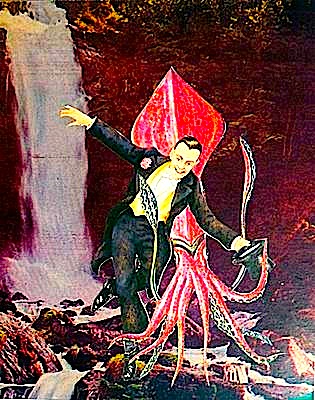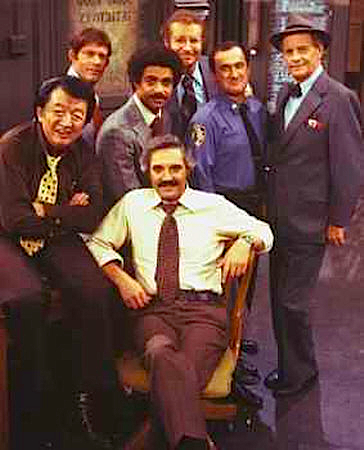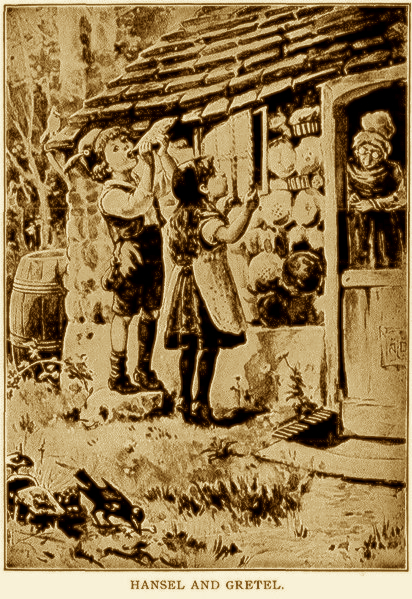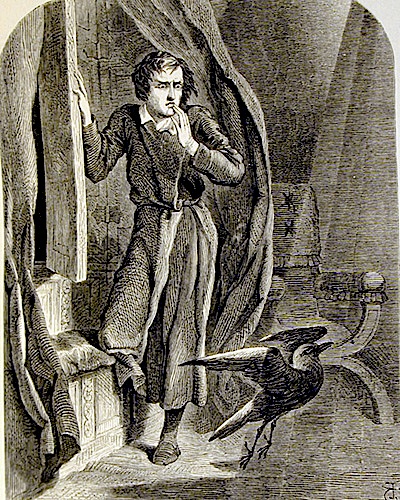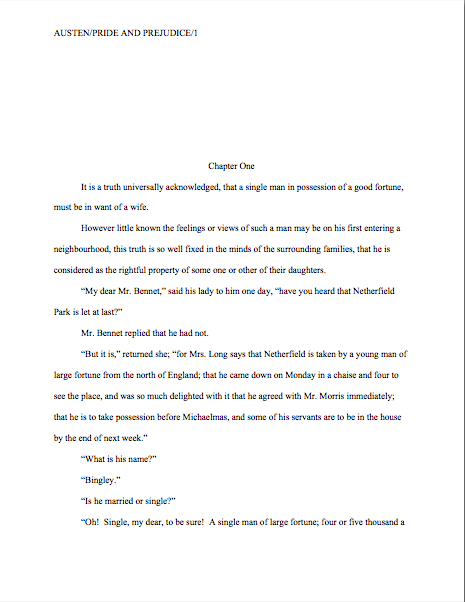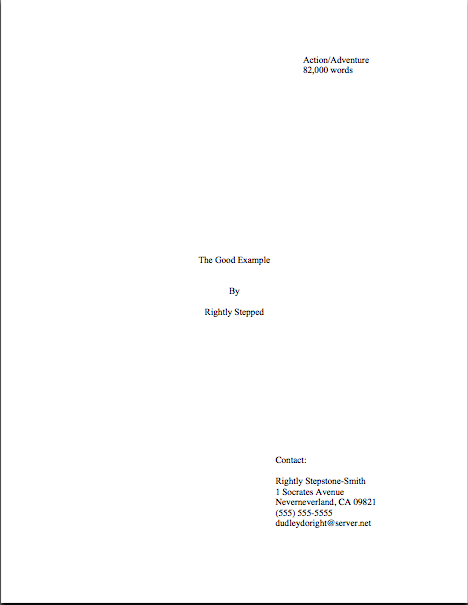Did you enjoy your weekend, readers, or were you too busy racking your brains, trying to come up with a list of your book’s selling points? Here in Seattle, where a writers’ organization to which I used to donate a tremendous amount of time is gearing up for its annual Conference That Shall Remain Nameless, aspiring writers are walking into walls, muttering to themselves, the sure sign that they’ve embraced the antiquated pitching method so favored by conference organizers, and so hated by everyone else: trying to cram the entire plot of a book into three sentences, memorizing them (thus the muttering and wall-battery), and spitting them out in one long breath at the pitch meeting.
As some of the brighter wits among you MAY have figured out by this point in the series, I eschew this approach. In my experience, it’s far, far better pitching strategy for a writer to learn to talk about her book effectively and in professional terms than to swallow a pre-fab speech whole, hoping to God that the agent or editor at whom she plans to spit it won’t do anything disorienting like ask follow-up questions.
News flash to those who adhere to the three-line approach: asking follow-up question is what agents and editors do when they hear a pitch they like. It’s the happy outcome — so why not prepare for it?
With that laudable goal in mind, I sent you off last Thursday with some homework. So I ask again: how is coming up with a list of why your book will appeal to your target audience going?
If you find you’re getting stuck, here’s a great way to jump-start your brainstorming process: hie ye hence to the nearest well-stocked bookstore (preferably an air-conditioned one, if you happen to reside in the northern hemisphere right now), stand in front of the shelves holding your chosen book category, and start taking a gander at how those books are marketed to readers.
Don’t try this at your local library — the idea is to discover at whom new releases in your field are being aimed, and how. The front and back covers are a fabulous place to start, since every syllable that appears on either will have been specifically crafted by the publisher’s marketing department to reach the book’s target demographic.
That last term, for those of you tuning in late, refers to the people who have already demonstrated interest in buying similar books. How, you ask? Generally, by that most straightforward means of fan self-identification: by actually plunking down the cash for a book in that category.
I don’t mean to alarm any of you with my psychic powers, but here’s a modest prediction: once you’ve made a small pile of books aimed at a specific group of readers, you may well notice that they all have something in common. In all probability, several somethings: back jacket blurbs aimed at a particular readership often repeat key words.
That’s not only true of book marketing, by the way. In the late 1980s, I got a job writing back labels for wine bottles. (Oh, you thought those colorless little quips just wrote themselves?) Since I was new to the game, I wrote lengthy, adjective-heavy descriptions for each and every wine, in the apparently mistaken impression that my job was to describe to the potential buyer what the wine within might taste like.
After a week or two, the marketing manager called me into his office. “You’re making this harder on yourself than it needs to be — and you’re going to make it harder for the buyer.”
I was flabbergasted. Hadn’t I been tying myself in knots, to assure an accurate description?
He waved away my objection. “Sweetie, the people who would understand your descriptions don’t buy wine based on the label copy; they buy it based upon knowledge of the winery, the year, the soil conditions, and every other piece of information you’re cramming onto the back label. But the back label is for people who don’t know much about wine, who want to know what the varietal is like. Every varietal has five or six adjectives already associated with it: oaky, for instance, or vanilla undertones. If you’re writing a description of a Chardonnay, haul out the Chardonnay adjectives and make sure you use most of them somewhere on the back label. Got it?”
As a writer, I was crushed, but I must admit, it was great marketing advice: I had mistaken the target market for my wine descriptions. To those readers, an overly-technical description was off-putting.
The same logic holds true for the language of a pitch or a query letter: since agents and editors think of manuscripts in terms of target demographics, book categories, and what has already proven successful in selling to a particular market, not speaking of your work in those terms isn’t the most effective way to present your book. An overly -detailed description, not matter how accurately it represents the book, is not what they’re hoping to hear.
So let’s turn our attention to pith, shall we? Shout hallelujah, citizens, for we are finally ready to tackle reducing your book to a single quip of bon mot-iness that would make Oscar Wilde blush furiously, if discreetly, with envy. Today, I am going to talk about coming up with your book’s KEYNOTE, also known colloquially as a BOOK CONCEPT.
(Did you know that when Wilde gave public readings, he NEVER read the published versions of his own work? Ditto with Mark Twain, another writer known to wow ‘em with great readings, and I’m quite sure I’ve never heard David Sedaris read the same story the same way twice. Sedaris seems — wisely — to use audience feedback to judge what jokes do and do not work, but Wilde and Twain apparently deliberately added extra laugh lines, so that even audience members very familiar with their published writing would be surprised and delighted. But I digress)
Brevity is the soul of the keynote. It is the initial, wow-me-now concept statement that introduces your book to someone with the attention span of an unusually preoccupied three-year-old.
Why assume you’ve got that little time? Because if you can impress someone that distrait, my friends, you can certainly catch the ear of a perpetually rushed agent — or the eye of Millicent the exhausted agency screener.
Before you pooh-pooh the idea of WANTING to discuss your marvelously complex book with someone whose attention span precludes sitting through even an average-length TV commercial, let me remind you: sometimes, you have only a minute or so to make a pitch. After a very popular class, for instance, or when your dream agent happens to be trying to attract the bartender’s attention at the same time as you are.
I ask you: since any reasonably polite hello will take up at least half a minute, wouldn’t you like to be READY to take advantage of the remaining 30 seconds, if the opportunity presents itself?
I know, I know: it’s not very glamorous to approach the agent of your dreams in the parking lot below the conference center, but the market-savvy writer takes advantage of chance meetings to pitch, where politeness doesn’t preclude it. (Just so you know: it’s considered extremely gauche to pitch in the bathroom line, but at most conferences, pretty much any other line is fair game.) You’re not going to want to shout your keynote at her the instant you spot an agent, of course, but a keynote is a great third sentence after, “I enjoyed your talk earlier. Do you have a moment for me to run my book concept by you?”
Here’s a thought that might make you feel a whole lot better about doing this: if you have a keynote prepared, you honestly ARE going to take up only a few seconds of her time. (Hey, you didn’t think I was just going to urge you to buttonhole agents in conference hallways without showing you how to do it politely, did you?)
But there I go, digressing again. Back to the business at hand.
The keynote’s goal is to pique your listener’s interest as quickly as possible, so s/he will ask to hear more. Like the pitch as a whole, the keynote’s purpose is not to sell the book unread, but to intrigue the hearer into wanting to read your manuscript — and to act upon that feeling by asking the writer to submit the manuscript.
Often by way of asking those pesky follow-up questions I mentioned earlier.
How do you arouse this level of interest without drowning the hearer in details? By providing a MEMORABLY INTRIGUING PREMISE in a swift single sentence.
Think of it as the amuse-bouche of the publishing world: just a bite, designed to intrigue the hearer into begging to hear the pitch. In your keynote, your job is to fascinate, not to explain — and certainly not to summarize.
Allow me to repeat that, because it’s crucial: the goal of the keynote is NOT to summarize the plot of the book; merely to make its PREMISE sound exciting enough to make a hearer want to know more. Just in case anyone is still confused, I am not suggesting that you routinely utilize only a single sentence to promote your book in person or in print — the keynote is designed to help open doors, not to serve as a substitute for the pitch.
Some of you are becoming a trifle impatient with my vehemence, aren’t you? “Jeez, Anne,” these finger-drummers observe, “don’t you think I’ve been paying attention? Why on earth would I limit myself to a single sentence when I have a ten-minute pitch appointment scheduled?”
Well, it could be because at literally every conference I attend, I see aspiring writers knocking themselves out, trying to come up with a single sentence that summarizes everything good about a book, but that’s really not the point here. The point is that the keynote is NOT a substitute for a full-blown pitch; it is a conversational appetizer to whet the appetite of the hearer so he ASKS to hear the entire pitch.
In that moment, you’re there to tease, not to satisfy. And did I mention that it should be both memorable and brief?
There are two schools of thought on how best to construct a keynote statement. The better-known is the Hollywood Hook, a single sentence utilizing pop culture symbolism to introduce the basic premise of the book. (Note: the Hollywood Hook should not be confused with a hook, the opening paragraph or line of a book or short story that grabs the reader and sucks him into the premise. Unfortunately, conference-going writers get these two terms confused all the time, leading to sometimes-tragic communication lapses.)
Hollywood hooks tend to run a little like this:
“It’s SPIDERMAN meets DRIVING MISS DAISY!”
It’s JAWS, but on dry land and with turtledoves!
“Paris Hilton is suddenly penniless and forced to work in a particle physics lab on the day Martians invade!”
It’s no accident that the example above ends in an exclamation point: you WANT your HH to be just a bit jarring; a spark of the unexpected will make your book concept sound fresh. Logical contradiction provides the shock of a Hollywood Hook, the combination of two icons that one would not generally expect to be found together.
For instance, a Hollywood Hook for:
…a book that teaches children the essentials of the Electoral College system might be, “Bill Clinton teaches Kermit the Frog how to vote!”
…a book on alternative medicine for seniors might be expressed as, “Deepak Chopra takes on the Golden Girls as patients!”
…a novel about sexual harassment in a tap-dancing school could conceivably be pitched as “Anita Hill meets Fred Astaire!”
See all those exclamation points? There’s a certain breathlessness about the Hollywood Hook, a blithe disregard for propriety of example. There’s a reason for this: in order to be effective as an enticement to hear more, the icons cited should not go together automatically in the mind.
Otherwise, where’s the surprise?
The whole point of the exercise is to intrigue the listener, to make him ask to hear more. If someone pitched a book to you as “A private investigator chases a murderer!” wouldn’t you yawn? If, on the other hand, if someone told you her book was “Mickey Mouse goes on a killing spree!” wouldn’t you ask at least one follow-up question?
Again, the point here is not to produce a super-accurate description, but a memorable sound bite.
All that being said, I should mention that I’m not a big fan of the Hollywood Hook method of keynoting. Yes, it can be attention-grabbing, but personally, I would rather use those few seconds talking about MY book, not pop culture.
And that’s not just about ego, honest. Not every storyline is compressible into iconic shorthand, whatever those screenwriting teachers who go around telling everyone who will listen that the only good plotline is a heroic journey.
Use the Force, Luke!
The other school of thought on constructing a keynote statement — and my preferred method — is the rhetorical teaser. The rhetorical teaser presents a thought-provoking question (ideally, posed in the second person, to engage the listener in the premise) that the book will presumably answer.
For example, a friend of mine was prepping to pitch a narrative cookbook aimed at celiacs, people who cannot digest gluten. Now, there are a whole lot of celiacs out there, but (as we should all know after our recent discussion on the helpfulness of statistics) she could not legitimately assume that any agent or editor to whom she pitched the book would either be unable to eat wheat or know someone who couldn’t. (Remember that great rule of thumb from last week: you can’t assume that an agent or editor has ANY knowledge about your topic.)
So she employed a rhetorical tease to grab interest: “What would you do if you suddenly found out you could NEVER eat pizza again?”
Thought-provoking, isn’t it? It may not have been a strictly honest way to present a book proposal that, if memory serves, included a recipe for gluten-free pizza dough, but it does present the problem the book solves vividly to the hearer.
Rhetorical teasers are more versatile than Hollywood Hooks, as they can convey a broader array of moods. They can range from the ultra-serious (“What if you were two weeks away from finishing your master’s degree — and your university said it would throw you out if you wouldn’t testify against your innocent best friend?”) to the super-frivolous (“Have you ever looked into your closet before a big date and wanted to shred everything in there because nothing matched your great new shoes?”).
Remember, you don’t want to give an overview of the plot here — you want to intrigue.
Again, the keynote is NOT a summary of your book; it’s a teaser intended to attract an agent or editor into ASKING to hear your pitch. So you will want to make it — say it with me now — both BRIEF and MEMORABLE.
By now, the mere sight of those two words within the same line is making you squirm a bit, isn’t it? “I understand WHY that might be a good idea,” I hear some of you grumble, “but I’m a writer of BOOKS, not one-liners. How does a novelist accustomed to page-long descriptions pull off being simultaneously brief and memorable?
That’s a great question, disgruntled murmurers, and it deserves a direct answer: don’t be afraid to use strong imagery, particularly strong sensual imagery that will stick in the hearer’s mind for hours to come.
If you’re ever going to use adjectives, this is the time. “What would you do if you suddenly found yourself knee-deep in moss everywhere you went?” is not as strong a keynote as “The earth will be covered thirty feet deep in musty grey lichen in three days — and no one believes the only scientist who can stop it.”
Notice how effective it was to bring in the element of conflict? Your keynote should make your book sound dramatically exciting — even if it isn’t. You shouldn’t lie, obviously, but this is the time to emphasize lack of harmony.
I’m quite serious about this. If I were pitching a book set in a convent where nuns spent their days in silent contemplation of the perfections of the universe, I would make the keynote sound conflict-ridden.
How? Well, off the top of my head: “What would you do if you’d taken a vow of silence — but the person you worked with every day had a habit that drove you mad?”
Okay, perhaps habit was a bit much. But you get my drift: in a keynote, as in a pitch, being boring is the original sin.
Thou shalt not bore on my watch.
I would advise emphasizing conflict, incidentally, even if the intent of the book were to soothe. A how-to book on relaxation techniques could accurately be keynoted as, “Wrap your troubles in lavender; this book will teach you how to sleep better,” but that’s hardly a grabber, is it? Isn’t “What would you do if you hadn’t slept in four nights?” is actually a better keynote.
Why? Experienced book-promoters, chant it with me now: because the latter encourages the hearer to want to hear more. And that, by definition, is a more successful come-on.
You WERE aware that both pitching and querying were species of seduction, right?
Or, if you prefer, species of storytelling. As Madame de Staël so memorably wrote a couple of centuries ago, “One of the miracles of talent is the ability to tear your listeners or readers out of their own egoism.”
That’s about as poetic a definition of marketing artistic work that you’re going to find. Use the keynote to alert ‘em to the possibility that you’re going to tell them a story they’ve never heard before.
Another effective method for a keynote is to cite a problem — and immediately suggest that your book may offer a plausible solution. This works especially well for NF books on depressing subjects.
A keynote that just emphasizes the negative, as in, “Human activity is poisoning the oceans,” is, unfortunately, more likely to elicit a shudder from an agent or editor than, “Jacques Cousteau said the oceans will die in our lifetimes — and here’s what you can do about it.”
Fact of living in these post-Enlightenment days, I’m afraid: we like all of our problems to have solutions. Preferably ones that don’t require more than thirty seconds to explain.
I can tell you from recent personal experience that the problem/solution keynote can be very effective with dark subject matter: there were two — count ‘em, TWO — dead babies in the sample chapter of the book proposal I sold a couple of years ago, and scores of preventably dying adults. It was a fascinating story, but let me tell you, I really had to sell that to my agents, even though they already had a high opinion of my writing.
If I’d just told them, “There are scores of people dying because of a plant that produces something that’s in every American household,” we all would have collapsed into a festival of sobs, but by casting it as, “There are scores of people dying because of a plant that produces something that’s in every American household — and this is the story of a woman who has been fighting to change that,” the book sounds like a beacon of hope.
Or it would have been, if I hadn’t caught mono and pneumonia simultaneously, forcing me to cancel the book contract. These things happen.
My point is, if I had stubbornly insisted upon trying to pique everyone’s interest with only the sad part of the story, I doubt the proposal would have gotten out of the starting gate. My agents, you see, harbor an absurd prejudice for my writing books that they believe they can sell.
They were right to be concerned, you know. Heads up for those of you who deal with weighty realities in your work: even if a book is politically or socially important, heavy subject matter tends to be harder to sell, regardless of whether you are pitching it verbally or querying it.
Particularly if the downer subject matter hasn’t gotten much press attention. This is true whether the book is fiction or nonfiction, interestingly enough.
Why? Well, think about it: an agent or editor who picks up a book is committing to live with it on a fairly intensive basis for at least a year, often more. Even with the best intentions and working with the best writing, that can get pretty depressing.
So it’s a very good idea to accentuate the positive, even in the first few words you say to the pros about your book. And avoid clichés like the proverbial plague, unless you put a clever and ABSOLUTELY original spin on them.
Actually, steering clear of the hackneyed is a good rule of thumb for every stage of book marketing: you’re trying to convince an agent or editor that your book is UNIQUE, after all. Reproducing clichés without adding to them artistically just shows that you’re a good listener, not a good creator.
If you can provoke a laugh or a gasp with your keynote, all the better.
Remember, though, even if you pull off the best one-liner since Socrates was wowing ‘em at the Athenian agora, if your quip doesn’t make your BOOK memorable, rather than you being remembered as a funny or thought-provoking person, the keynote has not succeeded.
Let me repeat that, because it’s a subtle distinction: the goal of the keynote is not to make you sound like a great person, or even a great writer — it’s to make them interested in your BOOK.
I’m continually meeting would-be pitchers who don’t seem to realize that. Instead, they act as though an agent or editor who did not ask to see pages following a pitch must have based his decision on either (a) whether he liked the pitcher personally or (b) some magically intuition that the manuscript in question is poorly written. Logically, neither could be true.
Okay, so that’s a bit of an exaggeration: if a pitcher is extremely rude to the pitchee, the latter usually won’t ask to see pages. But logically, no assessment of a VERBAL pitch could possibly be construed as a MANUSCRIPT critique.
In other words, they can’t possibly learn that you’re a fabulous writer until they read some of your prose, and while I’m morally certain that to know, know, know my readers is to love, love, love them, that too is something the industry is going to have to learn over time.
And remember, good delivery is not the same thing as book memorability. I once went to a poetry reading at conference that STILL haunts my nightmares. A fairly well-known poet, who may or may not come from a former Soviet bloc country closely associated in the public mind with vampire activity, stalked in and read, to everyone’s surprise, a prose piece. I don’t remember what it was about, except that part of the premise was that he and his girlfriend exchanged genitals for the weekend.
And then, as I recall, didn’t do anything interesting with them. (Speaking of the downsides of not adding artistically to a well-worn concept.)
Now, this guy is a wonderful public reader, a long-time NPR favorite and inveterate showman. To make his (rather tame) sexual tale appear more salacious, every time he used an Anglo-Saxon word relating to a body part or physical act, he would lift his eyes from the page and stare hard at the nearest woman under 40. I’ll spare you the list of words aimed at me, lest my webmaster wash my keyboard out with soap; suffice it to say, some of them would have made a pirate blush.
By the end of his piece, everyone was distinctly uncomfortable — and to this day, almost a decade later, everyone there remembers his performance. But when I get together with writer friends who were there to laugh about it now, can any of us recall the basic storyline of his piece? No.
Not even those of us who happened to be under 40 at the time.
What went wrong, you ask? He made his PERFORMANCE memorable by good delivery, rather than his writing. Sure, I remember who he is — I’m hardly likely to forget a man who read an ode to his own genitalia, am I? (I suspect all of us would have been substantially more impressed if someone ELSE had written an ode to his genitalia, but that’s neither here nor there.)
Did his flashy showmanship make me rush out and buy his books of poetry? No. Did it make me avoid him at future conferences like the aforementioned proverbial plague? You bet.
Exaggerated showmanship is a problem shared by a LOT of pitches, and even more Hollywood Hooks: they tend to be merely about delivery, rather than promoting the book in question. Please don’t make this mistake; unlike other sales situations, it’s pretty difficult to sell a book concept on charm alone.
Even if you’re the next Oscar Wilde, Mark Twain, or strange Eastern European sex fiend/poet.
Drama, conflict, vivid imagery, shock, cause for hope — these are the elements that will render your keynote memorable. And that’s extremely important, when you will be talking to someone who will have had 150 pitches thrown at him already that day.
Next time, I shall show you how to transform what you’ve already learned into a great opening gambit for striking up a conversation with anyone — and I do mean ANYONE — you might meet at a writers’ conference.
Think of it as my midsummer present to the shy. Keep up the good work!



